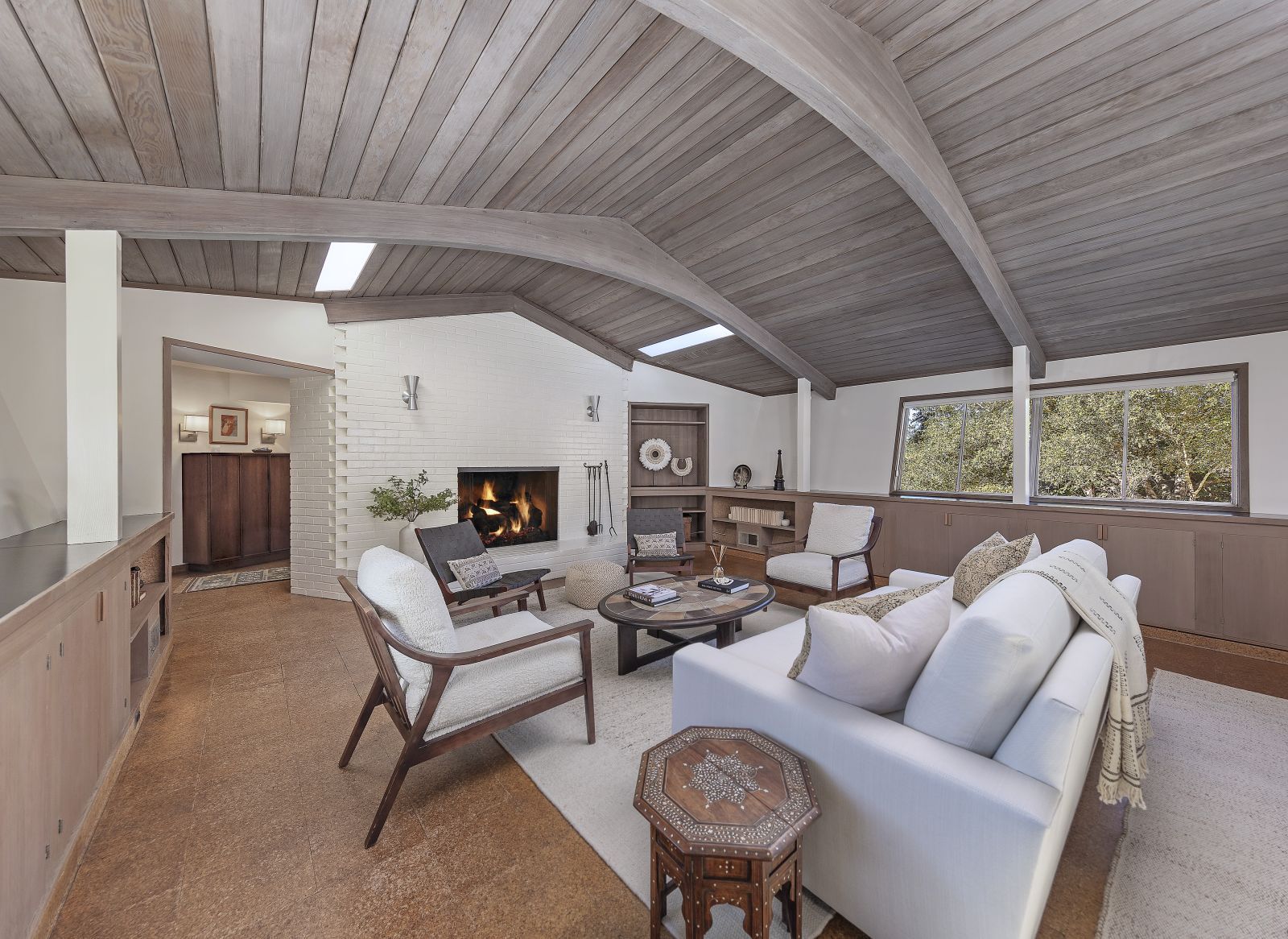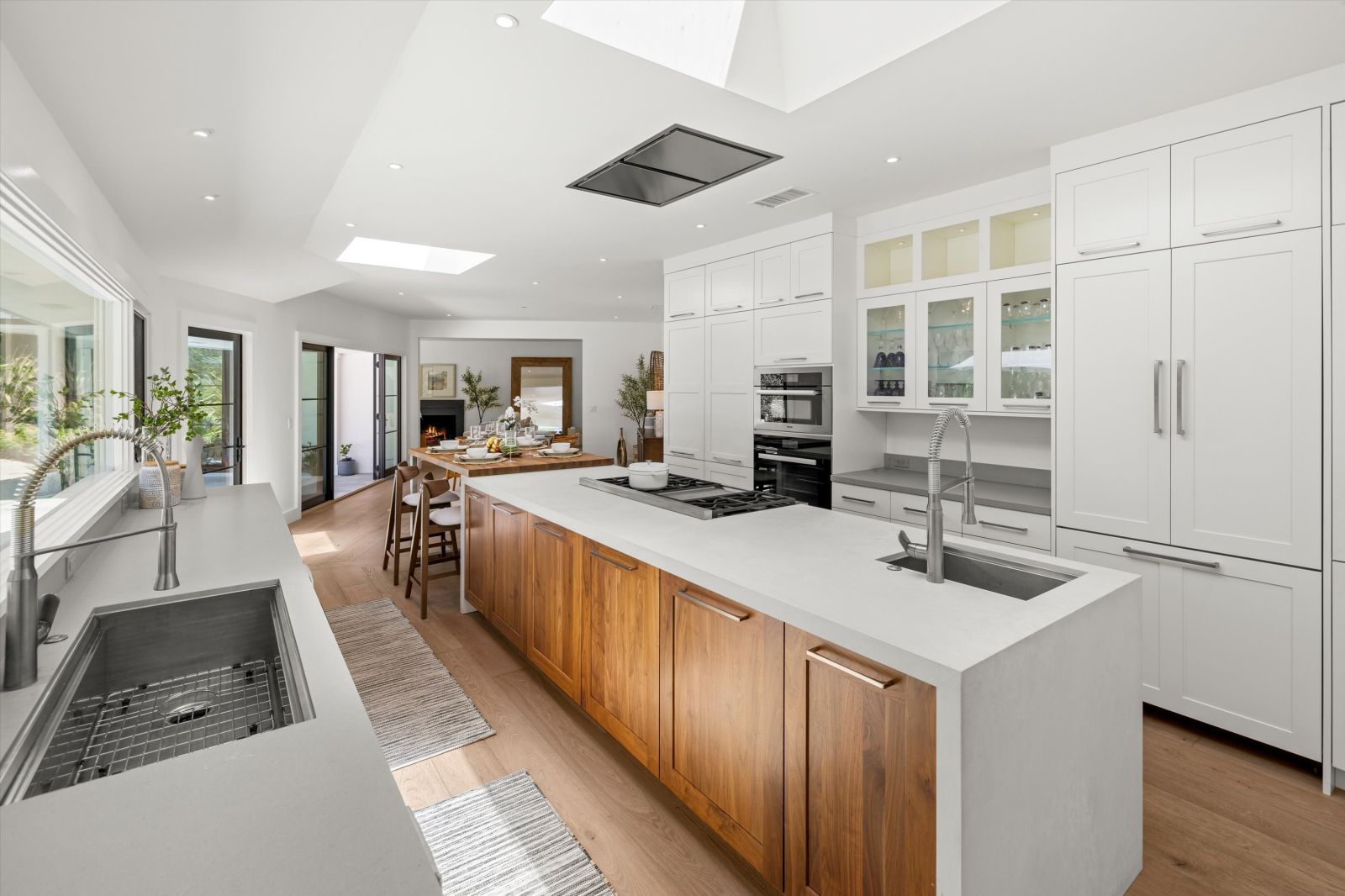
Declutter Your Home For Your Better Health
Ahh, the wonderful feeling of living in a clean, organized space – as demonstrated in the living room of my beautiful condo listing in Montecito, shown above. A well-kept home isn’t just visually appealing; it also has a profound impact on your overall well-being. In fact, a quick Google search on decluttering reveals numerous studies linking an organized environment to improved mental health, reduced stress, and increased productivity.
Simply put, clutter is a triple threat to your health—affecting you physically, emotionally, and mentally. Excess belongings can create a sense of chaos, making it harder to focus and relax. Decluttering is even more critical if you plan to sell your home. A clean, organized space allows potential buyers to envision themselves living there, making your property more appealing and increasing its marketability.
Mindfulness Can Help with Decluttering
Decluttering isn’t just about making room in your home—it’s about making space in your mind. A cluttered environment can lead to a cluttered headspace, making it harder to focus, relax, and thoroughly enjoy your surroundings. Mindful decluttering transforms the process into a moving meditation, allowing you to be fully present rather than weighed down by the past or anxious about the future. By thoughtfully curating your space, you create a home that fosters peace, balance, and the fresh start you deserve.
Mindfulness teaches us to focus on the present moment, and decluttering is a perfect opportunity to practice this. Instead of feeling overwhelmed by the entire process, start small—one drawer, one shelf, or one corner at a time. Give each space your full attention as you sort through your belongings. To reinforce your mindset, consider adopting a simple mantra, such as, “As I declutter, I free myself to live in the present.” While this may seem minor, the power of intentional words and focused action can significantly shift your perspective.
To help guide you, the following ten steps offer a mindful approach to decluttering. Feel free to adapt them to suit your personal style and mindset for the most effective results.

10 Steps to Decluttering Your Home
1) Start Small
Attempting to declutter your home in one session can be overwhelming. Instead, break it down into micro-projects. Downsizing and decluttering are stressful, so take baby steps. Completing small projects gives you a confidence boost and encourages consistency over time.
2) Get an Outside Perspective
Hire a professional home organization expert to provide a fresh perspective. If you’re preparing to sell your home, your Realtor can offer valuable insight into the most impactful areas to declutter.
3) Pick a Task and Stick with It
Avoid a scattered approach. Choose a specific area—such as the kitchen or home office—and complete it before moving on. Breaking big projects into manageable tasks helps maintain focus and motivation.
4) Clean for a Cause
Donate unwanted items to local charities. Many communities have excellent non-profits that appreciate clothing, furniture, and household goods. Gifting items to friends is another way to repurpose your belongings.
5) Untangle Your Cords
Messy cords create visual chaos. To keep them out of sight, use cord concealers or attach small hooks to furniture.
6) Let It Go, But Thoughtfully
Not everything should be donated. Be mindful when sorting through items to ensure you don’t discard something you’ll later regret parting with.
7) Use the Three-Pile Method
Separate items into three piles: donations, trash, and things to keep. This method simplifies the decision-making process.
8) Eliminate Health Hazards
Americans spend up to 90% of their time indoors. Mold, dust, and clutter can reduce air quality, aggravate allergies, and cause illness. Decluttering improves your home’s health and livability.
9) Digitize Photos
Consider digitizing old photos for safekeeping. Services like ScanMyPhotos.com make it easy to preserve your memories while freeing up space.
10) Reclaim Your Home
Clutter accumulates gradually, so regular decluttering is key. Be mindful of desensitization—if you’ve grown used to clutter, make a conscious effort to reclaim your space.
A Room-by-Room Guide to Decluttering

The Kitchen – Practice Honesty
The kitchen is prone to clutter. Designate specific spaces for everything and eliminate unused items.
Three Easy Steps to Taming Your Refrigerator:
- Ditch the Junk: Throw away expired items and processed foods.
- Purify the Space: Use a vinegar solution to clean your fridge.
- Replenish with Healthy Foods: Keep fresh produce and nutritious staples easily accessible.
The Living Room – Release Emotional Clutter
The living room often contains sentimental items. Ask yourself if you genuinely love an object or are holding onto it out of obligation. Use these questions to determine what stays:
- Do I use this?
- Would I buy this today?
- Does it add value to my life?

The Bedroom – Practice Daily Decluttering
Bedrooms tend to accumulate clutter because they are less frequently cleaned. The “One In, Two Out” rule helps keep closets in check. For every new item you buy, donate two.
Three Tips for Mindful Closet Decluttering:
- Invest in quality over fast fashion.
- Organize a clothing swap with friends.

The Bathroom – Accept and Let Go
Declutter cabinets and toss expired toiletries. Pay attention to:
- Towels: Keep only the essentials and donate extras to animal shelters.
- Cosmetics: Dispose of expired makeup and products you never use.
Decluttering your home isn’t just about tidying up—it’s about creating a place that enhances your well-being. Whether you're preparing to sell or simply seeking a fresh start, I’m here to help. Call me at (805) 886-9378 or email me at Cristal@Montecito-Estate.com to schedule a consultation. By approaching the process mindfully and tackling one space at a time, you can transform your home into a serene, welcoming sanctuary. Start small, stay consistent, and reclaim your space with intention.
Of Related Interest: